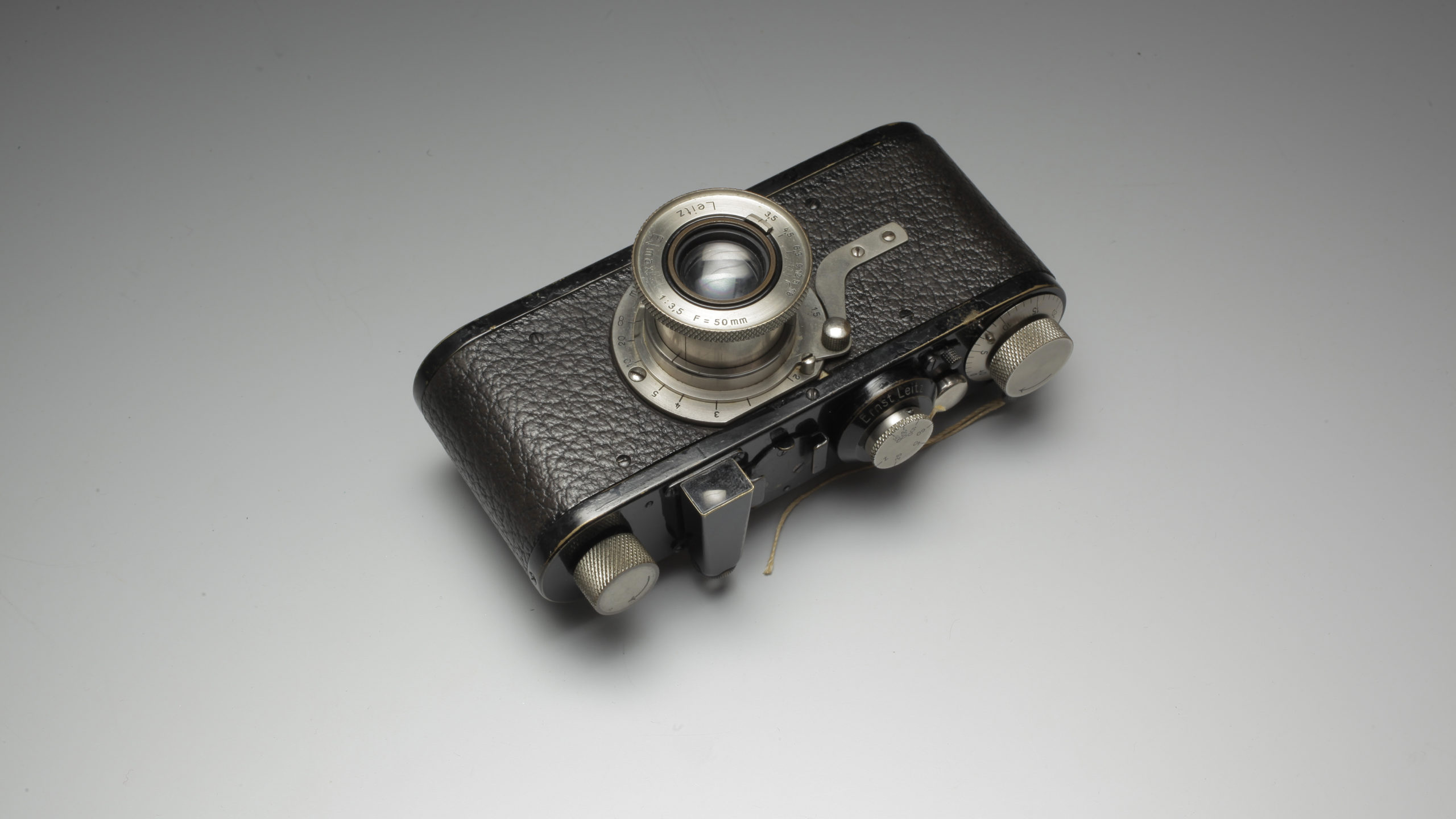Leica: “small negatives, large photographs”
The camera which truly launched the use of 35 mm film in photography was the Leica, which appeared on the market in 1925. It set the size of the small format once and for all, with a 24x36mm negative.
Its inventor, German Oskar Barnack, was head of the Research and Development department at the Ernst Leitz Optical Institute in Wetzlar. A photography enthusiast whose health was fragile, he had long wanted to design a light, handy photographic camera he could take with him on his walks.
At the same time, he designed a small device capable of testing the exposure of cinematographic images. Noticing that cinema negatives produced enlargements of an excellent quality, and applying his motto “small negatives, large photographs”, he decided to turn what was at first only a cinematographic accessory into the famous pocket camera he wanted to design. Prototypes were made as early as 1913, but war interrupted Barnack’s research, and it was not until 1925 that Leitz launched the first series of cameras on the market.
The Leica, a contraction of Leitz Camera, defined what still today represents the small format. Barnack, taking up an idea that had already been applied to certain devices prior to the Leica, doubled the standard size of the cinema negative. He thus obtained a 24×36 mm format, which produced images that were of an even higher quality. Furthermore, Barnack felt that the two-thirds ratio between the sides was more harmonious.


